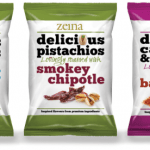
Food labeling in the USA has become a lot clearer and more realistic based on the new regulations. This is the first time in 20 years that food labels have had a major overhaul and there are four main changes to help the consumer make a better choice according to health advisers from Consumer Reports.
The new food labeling regulations came into force because they had become outdated in most respects and did not reflect changes in general nutrition research and understanding.
The new rules for labeling were first announced by the FDA on may 27th, 2016. The last time labeling was made uniform was 1994. According to the FDA, these changes are “based on updated scientific information, new nutrition and public health research, more recent dietary recommendations from expert groups and input from the public.”
For a start, there is a bolder type to make the writing more visually clearer to everyone.
Change In Serving Size Information
Of greater significance though is a change to serving sizes which are now more realistic and actually reflect what people eat. Take for example the idea that a package of food like a snack contains two or even three servings. Most Americans might eat the whole lot and so the nutrition information reflects the whole package as one serving. Whilst that seems a peculiar notion, American consumers are now eating much more. The shift in serving size is a more accurate representation of what is being consumed. It might encourage a more realistic appreciation too. The label will now contain two essential pieces of information, a typical serving size and a value for the whole package.
Changes In Vitamins Labeling
Another marked change is the shift to quoting vitamin D and potassium levels. Vitamin D is a critical vitamins which is one that many Americans do not get as much as others like vitamin A for example. We know vitamin D is needed for health bone growth and repair, and for helping in the fight against internal cancers. Potassium is important for reducing blood pressure. These are listed instead of vitamin A and C because they are found in virtually everyone’s diets.
Nutrients are also quoted in SI units like milligrams as well as showing the percentage of the daily recommended intake. In the old label, only the %DRI was shown.
Energy Content In Calories And Sugars
The energy content measured in calories is still there it’s just in bigger font and bolder. It is hoped manufacturers will start to reduce the energy content of foods, especially the contribution from sugar. In the past there was a single line for sugars and referred to naturally occurring sweeteners and those added in including high fructose corn syrup and granulated sugar.
The added sugars now go on a separate line which makes it much clearer as to what is added and what isn’t.
There is also a likelihood that manufacturers will improve the importance of the non-nutritive sweeteners like stevia and sucralose on the basis that whilst these are added sweeteners they do not add greatly to the calorie content of the food.
It still has to be borne in mind that two foods with the same calorie content will have different nutritional impacts. A candy bar of 200 calories is not the same as the equivalent amount of nuts when it comes to nutritional value because nuts are more than likely to offer a greater amount of vitamins and minerals. Other parts of the label have to be read to give you a clue.
The value for ‘calories from fat’ has gone. You still have to show grams of unsaturated, saturated and trans fats, as well as the percentage of the recommended daily intake.
There is also a footnote at the bottom of the label to explain better the”percent daily value”. The %DV of an ingredient tells you how much an ingredient contributes to the total amount of that ingredient you need each day. The %DVs are still based on the original premise of 2,000-calorie diet.
Generally there is a push to make it easier for consumers to try and reduce their calorie intake if the information about a food is clearer. Given the increasing incidence of heart disease, diabetes and cancer in the US population, that cannot be a bad thing.


Leave a Reply